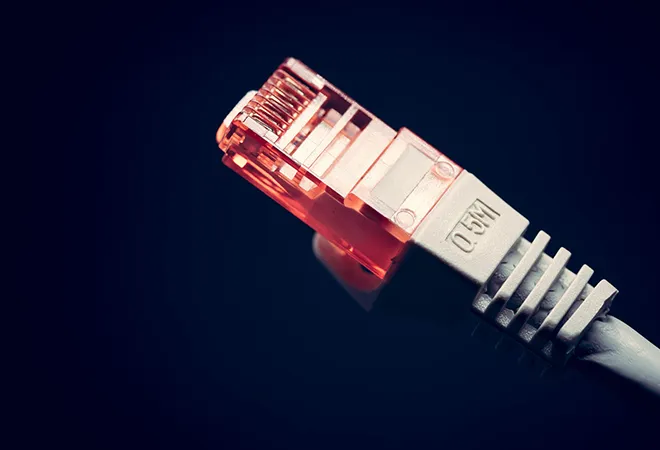-
CENTRES
Progammes & Centres
Location
As work from home becomes the new normal, regulators around the world have come under pressure to relook at the rules relating to bandwidth, traffic and indeed network neutrality.

With governments rapidly deploying digital tools to combat the COVID-19 pandemic, it’s clear that many of the evolving assumptions around rights and internet governance have been upended around the world. While risks to privacy rights have received significant attention, civil society activists must not lose sight of other aspects crucial to the inclusive functioning of this most important realm. As work from home becomes the new normal, regulators around the world have come under pressure to relook at the rules relating to bandwidth, traffic and indeed network neutrality.
Two recent developments in India acquire salience in this context. The first is major video streaming services reducing their bit rate to standard definition following a request from the COAI to limit the burden on India’s internet infrastructure. And the second, more directly implicating network neutrality, is the COAI’s request to the Telecom Regulatory Authority (TRAI) to allow telecom operators to zero-rate websites containing content related to COVID-19. The list currently includes certain websites like India’s Ministry of Health and Family Welfare, World Health Organisation (WHO), and a few other dashboards run by private entities.
On a first glance, these requests seem reasonable under the current circumstance, and the TRAI’s framework on the prohibition of discriminatory pricing of data does provide for exceptions in times of “grave public emergency.” Though the intentions of the COAI seem noble, regulators need to examine the list of zero-rated websites and be wary of any red flags associated with the net neutrality regulations.
There is very little publicly available data on how well India’s internet infrastructure is coping with the higher loads and whether Indians are in fact struggling to access relevant information on COVID19 for socio-economic reasons related to bandwidth. Additionally, the evaluation of relevant sources and content can be largely subjective and allows for an ample scope for biases and must be an outcome of a transparent process of selection. While the prioritisation of government information in times of public crises certainly is important, there are other diverse set of tools and websites that citizens use to access and share reliable information. There needs to be more deliberation on the list of websites and urls that COAI will allow being zero-rated during this emergency. The third concern relates and the period for which zero-rating will apply to certain websites. This aspect is crucial because, at present, there is no specified end date to the COVID-19 crisis and the COAI’s statement that its list may “evolve” creates room for scope, creep and expanse.
All of this is becoming important as there are concerns around efforts by industry groups and telecom players to alter network neutrality regulations. For example, telecom operators have argued that enforcement of net neutrality should be industry led and that there is no need for a multistakeholder governance structure since ensuring net neutrality is a part of their licence conditions. Although it is widely considered that India has the strongest net neutrality norms, the debate is far from complete. Even though zero rating practices have been outlawed, TRAI is still considering the issue of internet traffic management and creating a governance structure for enforcing net neutrality in India in another round of consultations. Thus, it becomes important to keep an eye on developments about net neutrality and ensure that they are working in the interest of the public.
While the current pandemic certainly affords the TRAI a useful opportunity to examine the conditions under which departures from network neutrality principles may be justified, it must demand an extraordinarily high standard of justification for such requests and stipulate clear timelines for when permissions for such departure must be withdrawn. Presently, it is not clear why other alternatives cannot be considered. For instance, a better way for telecom players to help during this crisis is by giving additional data packs and letting users access the entirety of the Internet. The request may have stemmed from the telecom operators’ realisation of the inability, of a certain segment of their subscribers, to afford internet access, given their precarious financial situation. The major telecom companies — Vodafone Idea, Airtel and Jio — have extended the validity of their recharge packs and added additional talk-time. This initiative can be further augmented to provide additional data to subscribers for the required period.
Requests like COAI’s can leave potential grey areas relating to the discretion allowed to telecom players, and violate the spirit of TRAI’s net neutrality regulations. TRAI must avoid any precedent that allows for discrimination in internet governance regarding content or applications. It can also regularly report and review the impact of COVID-19 on internet capacity. Considering the gravity of the global health crisis, the government and telecom players can together help ensure that marginalised communities including informal workers, healthcare workers and disadvantaged students have access to the Internet.
This can be taken forward by expanding telecom infrastructure, providing subsidised internet devices, free extra data, waiving off users’ subscription fees, or more such alternatives that allow access to the entirety of internet for a stipulated period. As digital access continues to be affixed with the public interest, vulnerable groups must be identified such that they have uninterrupted access to their internet services, ultimately bridging the digital divide amidst an ongoing global crisis.
The views expressed above belong to the author(s). ORF research and analyses now available on Telegram! Click here to access our curated content — blogs, longforms and interviews.

Shashidhar K J was a Visiting Fellow at the Observer Research Foundation. He works on the broad themes of technology and financial technology. His key ...
Read More +
Shruti Jain was Coordinator for the Think20 India Secretariat and Associate Fellow Geoeconomics Programme at ORF. She holds a Masters degree in Public Policy and ...
Read More +